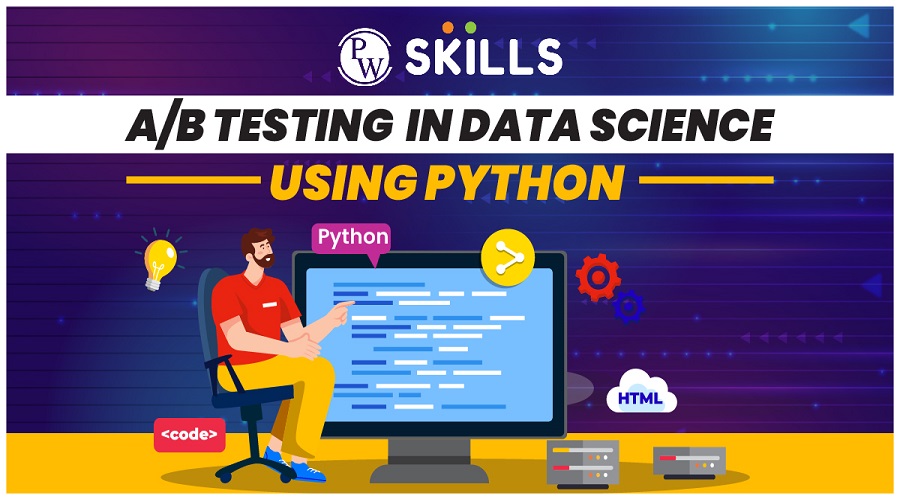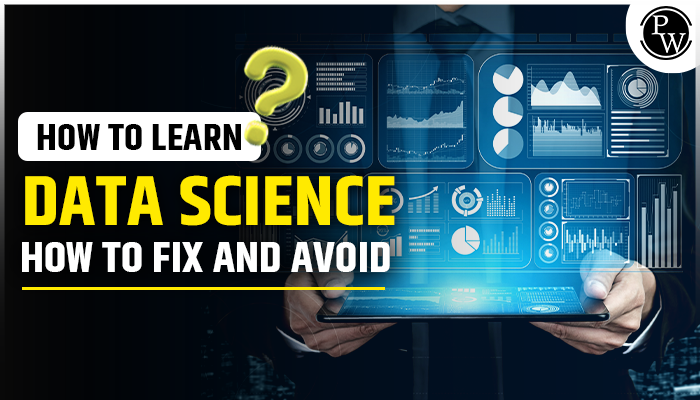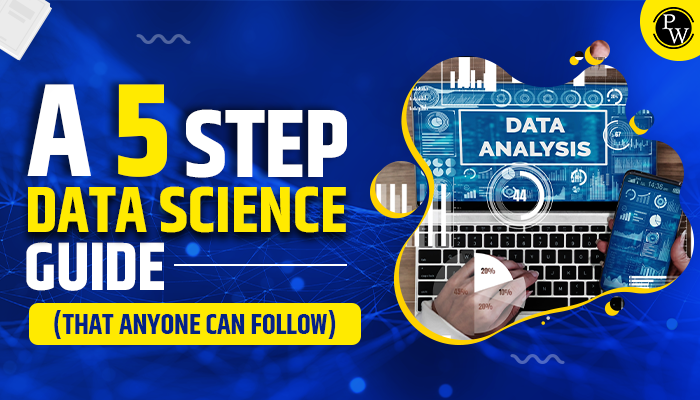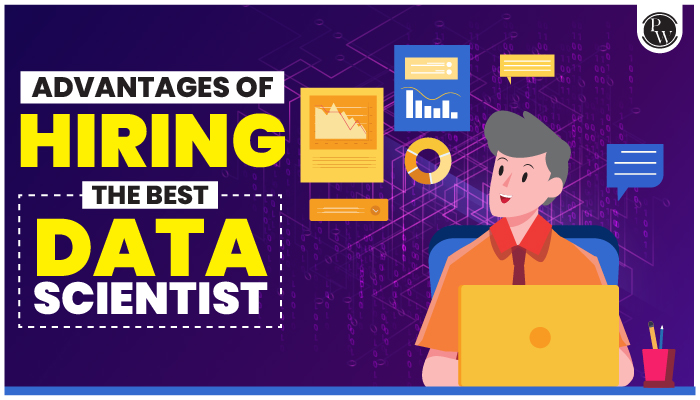Unlock the Power of A/B Testing in Data Science [Using Python]. Discover insights, learn how to optimize, and find out everything you need to know about effective experimentation. Check it out now!
AB Testing Data Science is a randomized control experiment used to compare two versions of a variable to determine which performs better. Keep reading to know more!
AB Testing Data Science: A/B testing is a crucial technique in data science that allows us to make informed decisions based on statistical evidence. Through the use of Python, we are able to perform A/B tests efficiently and effectively.
If you truly want to master this craft and become a skilled data scientist, we highly recommend checking out the Data Science With Generative AI Course by Physics Wallah. So why wait? Take the leap towards becoming a highly sought-after data scientist by enrolling in Data Science With Generative AI Course today!
What is AB Test in Data Science?
A/B testing serves as a fundamental randomized control experiment used to determine which version of a variable performs better under controlled conditions.
Consider a business scenario where you aim to boost product sales. Instead of relying solely on random experiments, employing scientific and statistical methods becomes essential, with A/B testing standing out as a prevalent statistical tool.

In this context, products are categorized into two groups: A and B. Group A remains unchanged, while significant alterations are made to the packaging of Group B. By assessing feedback from customer groups exposed to both A and B, one can determine the more effective version.
Essentially, A/B testing employs a hypothetical approach to decision-making, deriving population parameters from sample statistics. Here, the population represents all product customers, while the sample comprises those who participated in the testing process. You can download A/B Testing data science PDF to get instant access to information about AB testing in data science.
AB Testing Data Science (Definition)
A/B testing stands as a widely recognized controlled experiment employed to refine web marketing tactics. This method enables decision-makers to select the optimal website design by analyzing analytics data from two distinct alternatives: A and B.
AB Testing Data Science Interview Questions With Answers
Here are some common A/B Testing-related Data Science interview questions:
1) Explain the key components involved in designing an A/B test.
Key components include defining objectives, selecting control and treatment groups, determining sample size, setting up variants A and B, collecting data, and analyzing results.
2) How do you determine the sample size required for an A/B test?
Sample size is determined based on desired statistical power, significance level, expected effect size, and variability within the data.
3) Describe the difference between Type I and Type II errors in the context of A/B testing.
Type I error occurs when you incorrectly reject a true null hypothesis, while Type II error occurs when you fail to reject a false null hypothesis.
4) What is A/B Testing, and why is it important in Data Science?
A/B Testing is an experimental method used to compare two versions of a variable to determine which performs better. It’s vital in Data Science for optimizing strategies and making data-driven decisions.
5) What are the assumptions underlying a typical A/B test?
Assumptions include random assignment, independence of observations, and approximately normally distributed outcomes.
6) How do you decide the duration of an A/B test?
The duration is determined based on statistical considerations, traffic volume, and ensuring sufficient data collection for reliable results.
7) Discuss the concept of statistical significance in A/B testing.
Statistical significance indicates that the observed differences between A and B are unlikely due to random chance, often determined using p-values.
8) What is p-value, and how does it relate to A/B testing?
The p-value represents the probability of observing the data, assuming the null hypothesis is true. In A/B testing, a low p-value suggests a statistically significant difference between variants.
9) Explain the concept of confidence intervals in the context of A/B testing.
Confidence intervals provide a range of values around an estimate, indicating the precision and uncertainty. In A/B testing, they help understand the likely range of true effects.
10) How would you handle inconclusive A/B test results?
Inconclusive results may require extending the test duration, refining the test setup, or considering alternative methods like Bayesian approaches.
11) Describe a scenario for using a multi-armed bandit approach over traditional A/B testing.
A multi-armed bandit is preferred when rapid exploration of multiple options is essential, such as in online ad optimization or real-time systems.
12) What pitfalls or biases should you be aware of in A/B tests?
Common pitfalls include selection bias, novelty effects, multiple testing issues, and misinterpretation of results without considering external factors.
13) Explain the difference between sequential testing and traditional A/B testing.
Sequential testing allows for interim analyses and early stopping based on accumulating data, whereas traditional A/B testing requires predefined sample sizes and fixed durations.
14) Discuss ethical considerations in conducting A/B tests.
Ethical considerations involve obtaining informed consent, ensuring privacy, minimizing harm or bias, and transparently communicating test objectives and outcomes to participants.
15) How would you communicate A/B test results to stakeholders with limited statistical knowledge?
I would use clear, non-technical language, visual aids like graphs or charts, highlight key findings, and provide actionable insights relevant to their objectives and decisions.
How does A/B Testing Work?
A/B testing, often referred to as split testing, is a systematic approach used by businesses to optimize their online platforms, such as websites, newsletters, or mobile apps. This method enables organizations to compare two different versions of a webpage or content element to determine which one performs better in achieving a specific goal, such as increasing user engagement, sales, or conversion rates.
1) Understanding the Concept:
At its core, A/B testing is rooted in the scientific method. It starts with forming a hypothesis, where you propose a change with the expectation that it will lead to a particular outcome, like higher click-through rates or increased sales. This hypothesis is then rigorously tested using real-world data to validate or refute the proposed change’s effectiveness.
Key Steps in A/B Testing:
- Hypothesis Formation: Before diving into testing, formulate a clear hypothesis. This is essentially an educated prediction about how a particular change might impact user behavior or outcomes. For instance, altering the language in a newsletter might lead to increased website traffic.
- Setting Control and Test Groups: Divide your audience into two distinct groups: the control group, which remains unchanged (receiving the original version), and the test group, which receives the modified version. This division ensures a direct comparison between the two versions, eliminating external factors that could skew results.
- Random Sampling: To ensure unbiased results, it’s crucial to select participants randomly from your target audience. This random sampling technique ensures that each segment of your audience has an equal chance of being part of either the control or test group, reducing the risk of skewed or biased outcomes.
- Data Collection and Analysis: Over a specified period, monitor and collect relevant data from both groups. This could involve tracking metrics such as conversion rates, click-through rates, or user engagement levels. Once sufficient data is gathered, statistical analysis techniques are employed to determine if the observed differences between the two versions are statistically significant or simply due to chance.
- Drawing Conclusions: Based on the data analysis, draw conclusions regarding which version (A or B) performs better concerning the defined objectives. If the test version outperforms the control version significantly, you may decide to implement this change permanently.
Benefits and Considerations:
- Data-Driven Decisions: A/B testing provides empirical evidence to support design or content decisions, ensuring changes are based on actual user behavior and preferences rather than assumptions.
- Continuous Improvement: By regularly conducting A/B tests, organizations can iteratively refine their offerings, optimizing user experience and achieving better business outcomes over time.
- Potential Pitfalls: While powerful, A/B testing requires careful planning and execution. Factors such as sample size, test duration, and external variables must be considered to ensure accurate and actionable results. Additionally, interpreting results requires a nuanced understanding of statistical significance and practical relevance.
A/B testing offers a structured, data-driven approach to optimize online content and user experience. By systematically comparing different versions and analyzing user responses, organizations can make informed decisions, enhance user engagement, and achieve their business objectives more effectively.
Also Read: Top 10 Data Science Applications and Real Life Examples (2024)
A/B Testing Data Science Projects
A/B testing is a fundamental technique in data science that allows organizations to make data-driven decisions by comparing two versions of a variable to determine which performs better in terms of a specific metric. Here are some potential AB testing data science project ideas across various domains:
1) E-commerce Website Optimization:
- Objective: Improve conversion rates on an e-commerce platform.
- Implementation: Test different webpage layouts, call-to-action buttons, or product recommendations to determine which design elements lead to higher sales or user engagement.
2) Email Marketing Campaigns:
- Objective: Enhance email open rates and click-through rates.
- Implementation: Test variations in email subject lines, content structure, or sending times to identify strategies that maximize user engagement and drive desired actions.
3) Mobile App User Experience:
- Objective: Improve user retention and in-app engagement.
- Implementation: Experiment with different app features, user interfaces, or notifications to determine which configurations lead to increased user satisfaction and prolonged app usage.
4) Digital Advertising Campaigns:
- Objective: Optimize ad performance and return on investment (ROI).
- Implementation: Test various ad creatives, headlines, or targeting parameters to identify the most effective strategies for reaching and converting the target audience.
5) Content Personalization:
- Objective: Enhance user engagement on a content platform (e.g., news website, streaming service).
- Implementation: Experiment with personalized content recommendations, user interfaces, or subscription models to determine which approaches maximize user satisfaction and content consumption.
6) Pricing Strategies:
- Objective: Determine optimal pricing strategies for products or services.
- Implementation: Test different pricing models, discount offers, or bundling options to identify pricing structures that maximize revenue and customer satisfaction without compromising sales volume.
7) User Onboarding and Feature Adoption:
- Objective: Improve user onboarding processes and feature adoption rates for a software application.
- Implementation: Test variations in onboarding tutorials, user interfaces, or feature introductions to identify methods that facilitate smoother user onboarding and increase feature utilization.
8) Website Performance and SEO:
- Objective: Enhance website performance metrics such as page load times, bounce rates, or search engine rankings.
- Implementation: Test different website configurations, content structures, or SEO strategies to determine approaches that improve user experience and visibility in search engine results.
What is AB testing in Python?
AB testing data science Python refers to the process of conducting A/B tests using Python programming language and its associated libraries. Python offers a robust environment for data analysis, statistical testing, and visualization, making it a popular choice for performing A/B tests.
Key Components of A/B Testing in Python:
- Data Collection and Preprocessing: Use libraries like pandas to collect, clean, and preprocess data related to user interactions, conversions, or other relevant metrics from different groups (A and B).
- Statistical Analysis: Utilize statistical libraries such as scipy or statsmodels to perform hypothesis testing, calculate p-values, confidence intervals, and other statistical measures to determine the significance of observed differences between group A and group B.
- Data Visualization: Employ visualization libraries like matplotlib or seaborn to create plots, histograms, or other visualizations that illustrate key metrics, distributions, or trends observed during the A/B test.
- Interpretation and Reporting: Analyze the results of the A/B test, interpret statistical findings, and generate comprehensive reports or dashboards using tools like Jupyter Notebooks or reporting libraries to communicate insights and recommendations to stakeholders.
Steps to Perform A/B Testing in Python:
- Formulate Hypotheses: Define null and alternative hypotheses based on the desired outcome (e.g., increased conversion rate, higher user engagement).
- Data Segmentation: Divide the dataset into control (group A) and treatment/test (group B) groups randomly, ensuring that each group is representative of the target population.
- Experiment Design: Design the experiment by determining sample size requirements, duration, and other parameters essential for conducting a reliable A/B test.
- Data Analysis: Perform statistical tests (e.g., t-test, chi-square test) using Python libraries to compare key metrics (e.g., conversion rates, click-through rates) between group A and group B.
- Result Interpretation: Analyze the results, assess the statistical significance of observed differences, and make data-driven decisions based on the A/B test outcomes.
Also Read: What is Encapsulation Explain in Details
A/B Testing Data Science Examples
Here are a few A/B testing data science examples across different domains to showcase how organizations utilize this technique to make data-driven decisions:
1) E-commerce Conversion Rate Optimization:
- Scenario: An online retailer wants to improve the conversion rate on its product pages.
- A/B Test: The retailer tests two versions of a product page: one with a traditional layout and another with a simplified, user-friendly design.
- Outcome: By comparing conversion rates between the two versions, the retailer identifies the design elements that resonate better with customers, leading to increased sales.
2) Email Marketing Campaign Enhancement:
- Scenario: A digital marketing agency aims to optimize email open and click-through rates for its clients’ campaigns.
- A/B Test: The agency tests different email subject lines, content formats, or call-to-action buttons to determine which variations generate higher engagement.
- Outcome: Based on the test results, the agency tailors future email campaigns to incorporate elements that maximize user engagement and drive desired actions.
3) Mobile App User Experience Improvement:
- Scenario: A mobile app developer seeks to enhance user retention and in-app engagement for a new application.
- A/B Test: The developer experiments with various app features, user interfaces, or notification settings to identify configurations that increase user satisfaction and prolonged app usage.
- Outcome: Through iterative testing and optimization, the developer refines the app’s user experience, resulting in higher retention rates and improved user satisfaction.
4) Digital Advertising Performance Optimization:
- Scenario: An online advertising platform aims to optimize ad performance and maximize return on investment (ROI) for advertisers.
- A/B Test: The platform tests different ad creatives, headlines, or targeting parameters to identify strategies that resonate best with the target audience and drive conversions.
- Outcome: By analyzing A/B test results, the platform identifies the most effective advertising strategies, enabling advertisers to allocate budgets more efficiently and achieve better campaign outcomes.
5) Content Personalization for Media Platform:
- Scenario: A news media platform seeks to enhance user engagement and content consumption among its audience.
- A/B Test: The platform experiments with personalized content recommendations, user interfaces, or subscription models to determine approaches that maximize user satisfaction and content consumption.
- Outcome: Based on A/B test findings, the platform implements personalized content delivery strategies, resulting in increased user engagement, longer session durations, and higher subscriber retention rates.
Mistakes To Avoid While Conducting AB Testing Data Science
A/B testing is a powerful tool in the data science arsenal, enabling businesses to make informed decisions based on empirical evidence. However, like any methodology, it’s essential to execute it correctly to derive meaningful insights. Here are some common mistakes that data science professionals should avoid when conducting A/B testing:
1) Formulating an Invalid Hypothesis:
- Issue: The foundation of any A/B test lies in its hypothesis. If this hypothesis is flawed, the entire experiment becomes unreliable.
- Solution: Ensure that the hypothesis is well-defined, specific, and grounded in data-driven insights. Clearly articulate what changes are being tested, why they are being tested, and the expected outcomes.
2) Testing Too Many Elements Simultaneously:
- Issue: Overloading an A/B test by examining multiple variables concurrently can muddy the results and make it challenging to identify which element influenced the outcome.
- Solution: Prioritize tests by focusing on one or a limited set of variables at a time. This approach allows for clearer insights and more actionable recommendations.
3) Ignoring Statistical Significance:
- Issue: Disregarding the importance of achieving statistical significance can lead to premature conclusions based on insufficient or inconclusive data.
- Solution: Allow A/B tests to run until they reach statistical significance. This ensures that the results are statistically robust, reducing the risk of drawing incorrect conclusions based on random variations.
4) Neglecting External Factors:
- Issue: Failing to account for external variables or factors can skew A/B test results and lead to misleading interpretations.
- Solution: Conduct tests during comparable periods to minimize the impact of external factors such as seasonal variations, holidays, or promotional events. This ensures that the results reflect genuine differences attributable to the changes being tested rather than external influences.
5) Inadequate Sample Size or Duration:
- Issue: Using an insufficient sample size or running tests for an inadequate duration can result in inconclusive or unreliable results.
- Solution: Determine the appropriate sample size and test duration based on statistical power calculations and expected effect sizes. This ensures that the A/B test has sufficient sensitivity to detect meaningful differences between the control and variant groups.
Avoiding these common mistakes is crucial for ensuring the validity, reliability, and effectiveness of A/B testing in data science.
What is the Meaning of AB Testing in Machine Learning?
In the context of machine learning, A/B testing, also known as split testing, refers to the experimental process of comparing two or more machine learning models or algorithms to determine which one performs better in achieving a specific objective or metric. Unlike traditional A/B testing where the focus may be on user interfaces, content variations, or marketing strategies, A/B testing in machine learning emphasizes evaluating the efficacy, accuracy, or performance of different machine learning models or algorithms.
- Objective Definition: Clearly define the objective or metric you aim to optimize, such as prediction accuracy, model performance, user engagement, or business outcome.
- Model Comparison: Select two or more machine learning models, algorithms, or variations (e.g., different feature sets, hyperparameters, optimization techniques) to compare against each other.
- Experimental Design: Randomly assign datasets or subsets of data to each model or algorithm, ensuring that each model receives a comparable and representative sample of the data.
- Performance Evaluation: Train, validate, and test each model on the assigned datasets while monitoring the predefined objective or metric (e.g., accuracy, precision, recall, F1-score, AUC-ROC) to evaluate their performance.
- Statistical Analysis: Use statistical tests, such as t-tests, chi-square tests, or ANOVA, to determine if the observed differences in performance between models are statistically significant or simply due to random variation.
- Decision Making: Based on the experimental results and statistical analysis, select the model or algorithm that demonstrates superior performance according to the predefined objective or metric.
At Physics Wallah, we believe that everyone has the potential to become a data science expert. That’s why we’ve created our Decode Data Science ML 1.0 course that simplifies the complexities of data science and makes it accessible for all individuals, regardless of their educational background or prior knowledge.
So if you’re ready to take the next step in your journey towards mastering data science, then it’s time to decode it with Physics Wallah’s ML 1.0 course. And as a thank you for being a loyal reader of this blog, we’re offering an exclusive discount when you use the code “READER” at checkout.
Also Read: 6 Months Data Science Course Success Story
Split Testing Data Analytics
Split testing, often referred to as A/B testing, is a method used in data analytics to compare two or more versions of a webpage, application, or content element to determine which performs better in terms of user engagement, conversion rates, or other predefined metrics. This approach allows organizations to make data-driven decisions by evaluating variations in real-world scenarios, leveraging statistical analysis to identify the most effective option.
- Objective Definition: Clearly define the goal or metric you aim to optimize, such as click-through rates (CTR), conversion rates, user engagement, or revenue generation.
- Variation Creation: Develop different versions (A, B, C, etc.) of the element you want to test, each incorporating specific changes or variations (e.g., design, content, layout, call-to-action).
- Randomized Assignment: Randomly assign visitors, users, or participants to each version of the element being tested, ensuring a representative and unbiased sample across groups.
- Data Collection: Collect relevant data and metrics for each variation, such as clicks, conversions, bounce rates, time spent on page, or any other key performance indicators (KPIs) aligned with your objectives.
- Statistical Analysis: Analyze the collected data using statistical methods (e.g., t-tests, chi-square tests, confidence intervals) to determine if the observed differences in performance between variations are statistically significant.
- Result Interpretation: Interpret the results of the split test to identify the variation that outperforms others based on the predefined objectives or metrics, considering both statistical significance and practical significance.
- Implementation: Implement the winning variation or insights derived from the split test to optimize user experiences, improve conversion rates, enhance engagement, or achieve other desired outcomes.
Also Read: 5 Books Every GenAI Enthusiast Should Read
Applications of Split Testing in Data Analytics:
- Website Optimization: Test variations of webpage elements, such as headlines, images, buttons, or layouts, to improve user engagement, conversion rates, and overall website performance.
- Email Marketing Campaigns: Experiment with different email subject lines, content formats, or call-to-action buttons to maximize open rates, click-through rates, and conversion rates for email campaigns.
- Mobile App Design: Evaluate variations in app interfaces, features, or navigation paths to enhance user satisfaction, retention rates, and in-app engagement.
- Content Strategy: Test different content formats, headlines, or layouts in blogs, articles, or landing pages to optimize reader engagement, time spent on page, and conversion rates.
Mastering data analytics requires continuous learning and practice, which is why we highly recommend Physics Wallah’s Data Analytics Course. This comprehensive course not only covers split testing but also equips you with the necessary skills to excel in other areas of data analytics.
And as a gesture of our appreciation for being a loyal reader, make sure to use the coupon code “READER” at checkout for an exclusive discount on the course fee. So go ahead, take your first step towards becoming a data-driven expert today with Physics Wallah’s Data Analytics Course. Trust me; your future self will thank you for it!
AB Testing Data Science FAQs
What is the AB testing method?
A/B testing, also known as split testing, is a method used in data science to compare two or more variations of a webpage, application feature, marketing campaign, or other elements to determine which performs better in terms of predefined metrics like user engagement, conversion rates, or revenue.
How does A/B Testing differ from traditional hypothesis testing?
While traditional hypothesis testing aims to validate or refute a specific hypothesis about a population, A/B testing focuses on comparing two or more variations to identify which one yields better results based on specific metrics in real-world scenarios.
What are the key components of conducting an A/B test?
The key components of an A/B test include defining objectives, creating variations, randomizing assignments, collecting data, conducting statistical analysis, and interpreting results to determine the most effective variation.
How do you determine the sample size for an A/B test?
Determining the sample size for an A/B test depends on several factors, including desired statistical power, significance level, expected effect size, baseline conversion rate, and practical constraints. Statistical tools, calculators, or consulting with statisticians can help determine an appropriate sample size.
What statistical methods are commonly used in A/B testing?
Common statistical methods used in A/B testing include t-tests, chi-square tests, z-tests, confidence intervals, and regression analysis, depending on the nature of the data, metrics, and objectives of the test.





